Gross Domestic Product— Britain managed to avoid a recession in the early 2000s despite weakness elsewhere in the global economy. At that time, economic growth came from a strong and thriving services sector that more than offset a weak manufacturing sector. One reason for manufacturing’s weakness had been the strong value of the pound especially against the euro and the dollar. This made British manufactured products expensive in the eurozone, the nation's primary export market. As in the U.S., the consumer and housing provided the backbone of growth — until now.
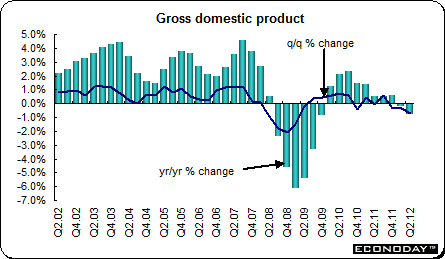
After several quarters of weakening, growth contracted in the second quarter of 2008 as the credit crisis engulfed the important financial sector and the housing sector crumbled. At the same time, inflation — thanks to commodity price increases — limited the Bank of England’s actions to stimulate growth by cutting interest rates. GDP shocked analysts and declined for five consecutive quarters before growing again in the third quarter of 2009.
First quarter 2011 GDP showed that the economy remained weak albeit growing. It advanced 0.2 percent and 1.6 percent on the year. Higher taxes and overall budget cutting have left the economy vulnerable and weak. Data for the second quarter show the economy weakening even more. GDP edged down 0.1 percent on the quarter and up 0.4 percent on the year. Third quarter growth picked up somewhat — GDP was up 0.6 percent and 0.3 percent when compared with a year ago. The final quarter of the year saw growth slip 0.3 percent on the quarter. However, growth remained positive — up 0.6 percent — when compared with a year ago. The economy slipped once again into a technical recession when first quarter GDP was down 0.3 percent on the quarter and slipped 0.2 percent on the year as fiscal tightening squeezed the economy and events in the Eurozone weighed on the UK. Things in the second quarter did not improve, but rather deteriorated. Revised second quarter GDP slumped 0.5 percent both on the quarter and year.
Industrial Production — Industrial production had been a drag on the economy for some time even though it only accounts for about 16 percent of the economy. Until recently, the strong pound sterling made British manufactured goods expensive in its two primary markets — the Eurozone and the U.S. But with weak to nonexistent growth in its primary markets and at home, industrial and manufacturing output are struggling.
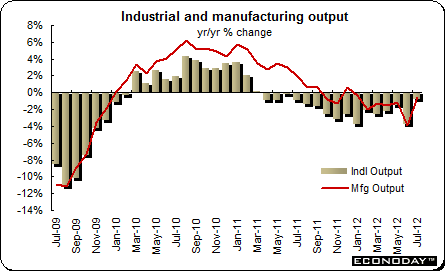
Inflation
Inflationary pressures — despite the weakening economy — have limited Bank of England policy actions as the CPI remained above the Bank’s inflation target of 2 percent. Housing prices have leveled off — and according to some measures, declining — while the weak pound sterling has made imports expensive. The graph below compares two measures of consumer inflation. The retail price index excluding mortgage interest payments was the Bank of England’s inflation measure until January 2004 when it was replaced with the consumer price index. The CPI uses Eurostat’s harmonized index of consumer price methodology and is comparable across the European Union. The RPIX has been used for a variety of domestic purposes including cost of living adjustments. However, the new government has indicated that it plans to switch to the CPI for these adjustments in the future. With an inflation target of 2.0 percent, the Bank of England has had to be cautious given recent inflationary pressures. However they appear to be easing even though inflation remains above target.
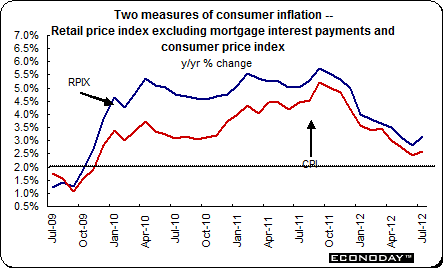
Producer prices are measured two ways — input prices and output or factory gate prices. Whether input or output, the PPI which had been influenced by higher input prices for raw materials such as steel and crude has seen these pressures melt away dramatically. Manufacturers have had difficulty in passing on whatever price increases exist due to weak demand.
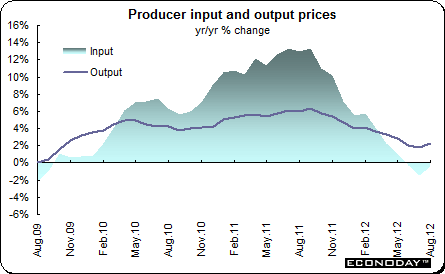
Unemployment — Two unemployment measures are used to evaluate labor market conditions. After having moved upward at a rapid pace, both measures have leveled off. The first is the timelier claimant unemployment rate, which increased to 5.0 percent then eased to 4.5 percent. The rate currently is 4.8 percent. The second is the International Labour Organisation (ILO) unemployment rate, which excludes jobseekers that did any work during the month. The ILO rate is now 8.1 percent.
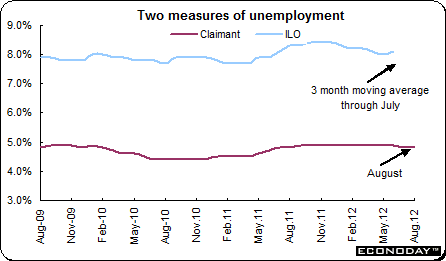
Merchandise trade — Ever since statistics on exports and imports of goods were first collected in 1697 trade has been one of the country’s key economic indicators. Britain’s merchandise trade balance has historically been negative. Like the U.S., Britain must rely on healthy investment income from abroad and service exports to fund its appetite for imported goods. The greatest volume of trade takes place with other EU countries, thus the exchange rate between the pound sterling and the euro plays a crucial role.
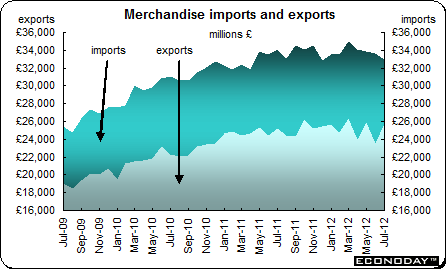
|